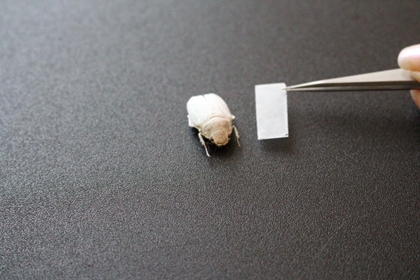|
NOVIDADES
Polymer foils that are extremely thin and characterized by a high light scattering rate are produced by a new process developed by Karlsruhe Institute of Technology (KIT). The inexpensive material may be applied industrially to various objects to give them an attractive white appearance. Moreover, the process can make products environmentally more compatible. A brilliant white surface makes furniture and other objects appear clean, bright, and modern. So far, titanium dioxide has been the standard pigment used for white coloring of lacquers, paints, and plastics as well as of cosmetics, foods, chewing gum, or pills. However, the pigment is in the focus of criticism. "Titanium dioxide has a very high refractive index, it reflects incident light almost completely. But it is associated with the drawback that its particles do not degrade and thus pollute the environment in the long term," says Professor Hendrik Hölscher of KIT's Institute of Microstructure Technology (IMT). In addition, there have been concerns that titanium dioxide could be harmful to health.  A nanostructured polymer film modeled on the white beetle Cyphochilus insulanus produces a brilliant white coating. Credit: Julia Syurik, KIT
While engineers frequently develop solutions based on materials made of several chemical elements, nature mostly restricts to a single basic material that has interesting mechanical, optical, or physico-chemical properties thanks to its complex three-dimensional structure. Bionics that focuses on understanding and imitating phenomena of nature to make them technically usable frequently leads to entirely new solutions that would never have been found in any other way, the researcher adds. PhysOrg. Accessed: Apr 05, 2020.
|
|||||||||||||||||||||||||